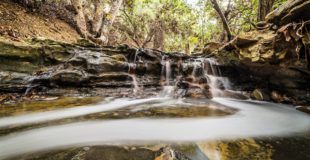In this tutorial I go over how to shoot long exposures of water without having to use filters. I go from in-camera setup all the way through my post-production workflow in Photoshop.
Links:
Instagram:
www.instagram.com/lightbendersvisuals
Facebook:
www.facebook.com/lightbendersvisuals
Website:
www.lightbendersvisuals.com
Original source

24 responses to “Photography Tutorials: How to shoot long exposures with no filters”
Thank you for this video ? Going to a lighthouse today and I don't have a natural density filter, hopefully I can use this to get some silky water. Thanks for the great video!
can we do the photo tweaking after by saving the blended photo as raw format??
Why not just take a 10 second exposure to start with ?
Great video, could you point me in the right direction about how to clean up your photo? You sped past that part. I have always heard that if you do it right in camera then you don't need to do it post. So, if I take a pic and use a grey card or incident meter and when it's in camera Raw it never shows a perfect histogram. Do I need to edit then? And if and when it does need to be adjusted, I need to learn where to go from there. There's got to be some kind of formula to cleaning up your photo. Could you make a video or do you have one or know of a good one to teach me how to do that? Even just making adjustments in general.
Mind If I ask, if want to edit in photoshop does it need raw file or jpeg? Because when I load they never merge for me, I have to merge my self, after I do that I can't even use stack mode, I need help to be honest
From the last video I watched about long exposure… 100 isn't overkill.
VERY GOOD!
good tutorial, although the entire shot seems underwhelming. I know the tutorial was explaining long exposures without filters, and that was spot on. It really helped explain the process. But the final edit on the photo, the top portion (sky/trees) were really bland, and distracting from the subject (waterfall). Do you agree?
Yawn
Both Cannon and Nikon offer multiple exposure mode. Set your camera continuos shooting mode, put a trigger release on, set your camera to 10 1 sec exposures and hit your remote. Let the camera combine them. My rule is to do as little work in photoshop if any at all. Great work and photo this is just an alternate method.
Who else was waiting for him to knock his camera into the water on that mini tripod? 😛
really helpful man. was looking for this for a long, long time
Very useful video, and well presented.
Excellent vids man!
Can you do one with filters
Really well and simply explained. Thanks matey
Thanks for everything you are doing for the photo community and especially for newbies like myself! After watching ALL of your videos I see a little light at the end of the tunnel.
Nice! You make it look to easy. Do you have ant recommendation for training programs for Photoshop and Lightroom.
thanks a lot man.. just what i was looking for 🙂
Hi Brent…Your original photos are all brilliant…No need for photoshop!What is your setting for that?
wow this was so much easier than spending 10-15 mins with an nd filter i just threw away all my filters¡¡¡
What happened to the good ole days where you can take amazing photos without the help of a computer? After watching this video I think I rather find a lens that can take an ND Filter and just get the shot right the first time.
Why is my stack mode greyed out in photoshop cc 2015.5?
it can take filters